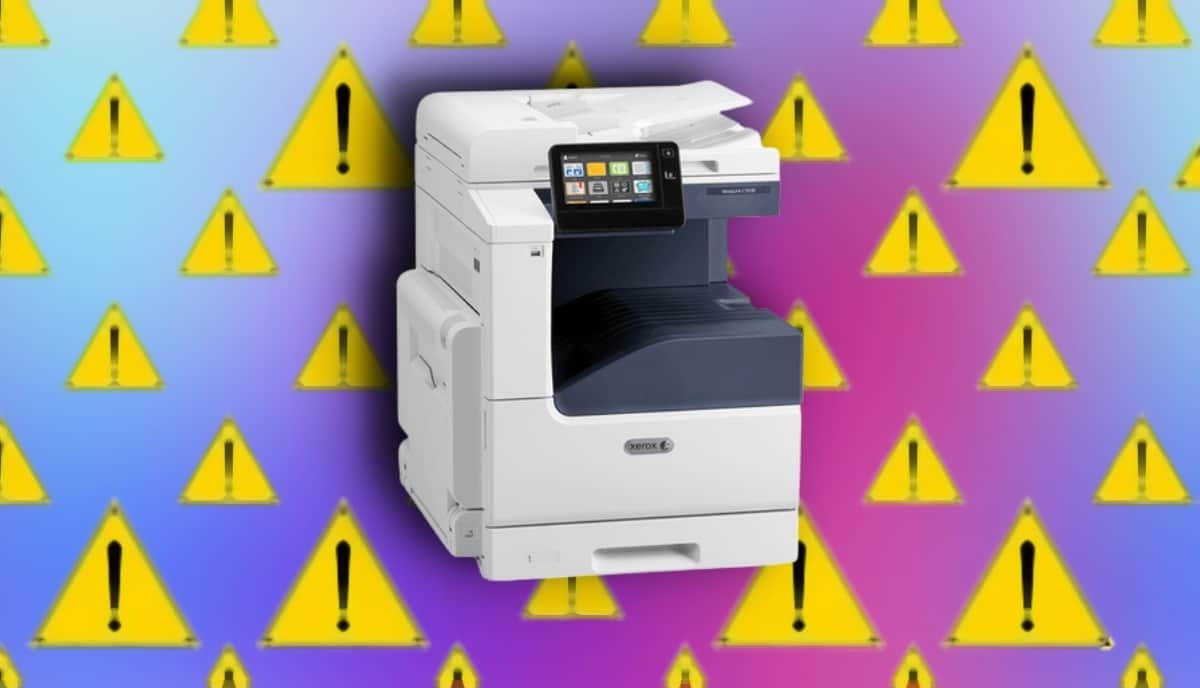Xerox Versalink printers are vulnerable to pass-back attacks. Rapid7 discovers LDAP & SMB flaws (CVE-2024-12510 & CVE-2024-12511). Update firmware now!
Rapid7 researchers uncovered security weaknesses in Xerox Versalink C7025 multifunction printers, specifically models running firmware version 57.69.91 and earlier. These vulnerabilities designated CVE-2024-12510 and CVE-2024-12511, expose the devices to “pass-back” attacks.
According to Rapid7’s research shared with Hackread.com, these are a type of attacks that allow a malicious actor who has compromised the printer’s administrative functions to redirect authentication requests to a system under their control. This can be achieved by altering settings related to services like Lightweight Directory Access Protocol (LDAP), Server Message Block (SMB), and File Transfer Protocol (FTP).
The LDAP vulnerability allows an attacker to modify the LDAP server’s IP address within the printer’s configuration. By then triggering an LDAP lookup, the printer unwittingly sends authentication credentials to the attacker’s rogue server. The attacker can then capture these credentials in clear text. Similarly, the SMB/FTP vulnerability allows modification of the SMB or FTP server’s IP address in the user’s address book configuration.
The image illustrates how an attacker might manipulate the server IP address to redirect authentication attempts to a rogue server, thereby stealing the credentials. Predefined login credentials, with the username “MFPservice,” are used for authentication.
While the password itself is obscured, its presence indicates that the printer is configured to authenticate to the LDAP server, a detail central to the pass-back vulnerability where these credentials could be captured by an attacker.
This can be exploited by triggering a scan-to-file operation, which sends authentication credentials to the attacker-controlled server. In the case of SMB, this could expose NetNTLMV2 handshakes, potentially allowing further compromise of Active Directory file servers. For FTP, credentials would be transmitted in clear text.
Successful exploitation of these vulnerabilities requires either administrative access to the printer’s settings or, in some cases, physical access to the console or remote access via the web interface if user-level remote control is enabled.
The impact of these vulnerabilities is significant, as attackers could potentially gain access to sensitive credentials, including those for Windows Active Directory. This could enable lateral movement within a network, compromising critical servers and systems.
Rapid7 responsibly disclosed these vulnerabilities to Xerox, coordinating the disclosure timeline and working with the vendor to confirm the effectiveness of the patches. Organizations using affected Xerox Versalink printers should immediately upgrade to the latest patched firmware version.
In case immediate patching is not feasible, it is recommended to set a strong and unique password for the printer’s administrative account, avoid the use of domain administrator accounts for LDAP or scan-to-file services, and disable remote console access for unauthenticated users.









